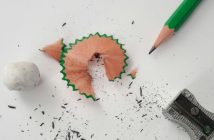Jenny Winkelman makes music and art across the world

After living abroad in five countries, Jenny Winkelman says Alaska in the U.S. is the only place she claims as home. Winkelman knew from an early age that she wanted to teach and live abroad for good. Globetrotting to locales such as Tanzania, Saudi Arabia and Russia, she has been able to explore other cultures while teaching both music and art. At the International School of Beijing she teaches art to Grades 3 and 4 and performing arts – music, dance and drama – to Grade 5. She spoke with beijingkids about wanderlust and how the basics of art and music remain consistent across continents.
Where was your first job?
I got my first job teaching in Tanzania. I didn’t even know where I was on the map; I just kind of landed there in Moshi, Tanzania, at the foothills of Kilimanjaro. I didn’t really plan on ever living back in the States.
Where did you head next?
I met my husband, who is also a teacher, and we spent three years in Tanzania and one year in Kenya, then we traveled around for a year and ended up in Luxembourg, where we stayed for six years. My two children were born there.
How did you end up in Beijing?
After Luxembourg, we moved to Riyadh, Saudi Arabia, for six years. There, I taught music for five years and art for one year. And then we lived in Moscow for two years where I taught music. It was our choice to pick the next place based on the jobs. Theoretically, you can go anywhere in the world. Then we ended up in Beijing. This is our fifth year here.
What is the most important thing to you about where you live?
Being able to escape to nature. I found Moscow the most difficult to live in because we lived in the middle of a big city, but with every other place, it was easy to access open spaces. We’d go on a safari in Africa, desert camping in Saudi Arabia, in Luxembourg we lived near a forest, and we live in the outskirts of Beijing.
What kind of art and music do you teach?
In elementary art you teach the same media as K-12: clay, drawing, painting, sculpture, printmaking, batik and fabric weaving. For music, I’ve taught mostly the Orff Approach, a method using a recorder, xylophone, percussion, singing, body percussion, and learning to move to rhythm and music.
How did your curriculum change from country to country?
It’s probably stayed pretty similar all along although in every country, I would pick up local art and music and try to incorporate that. The curriculum is similar in all countries, although I would pull more from African rhythms in Tanzania, western choir singing in Europe, more music movement and dancing with famous Russian composers in Moscow. Here, I do something with the Monkey King to incorporate Peking Opera.
What projects have you done in Beijing?
One of my favorite art projects is a clay project I started in Luxembourg. It’s based on German breakfast plates used in many countries in Europe. A flat slab rectangle is the plate, and we make a cup and an egg cup (to hold a soft-boiled egg). The slab method makes the plate, the pinch method makes the egg cup, and the coil method makes the cup. In the end, we can have dishes for hot chocolate, a sandwich and a soft-boiled egg. Or the Chinese kids will say green tea, jiaozi and soy sauce. It’s an art project with real ceramic techniques that can be used for years – if they do it right.



